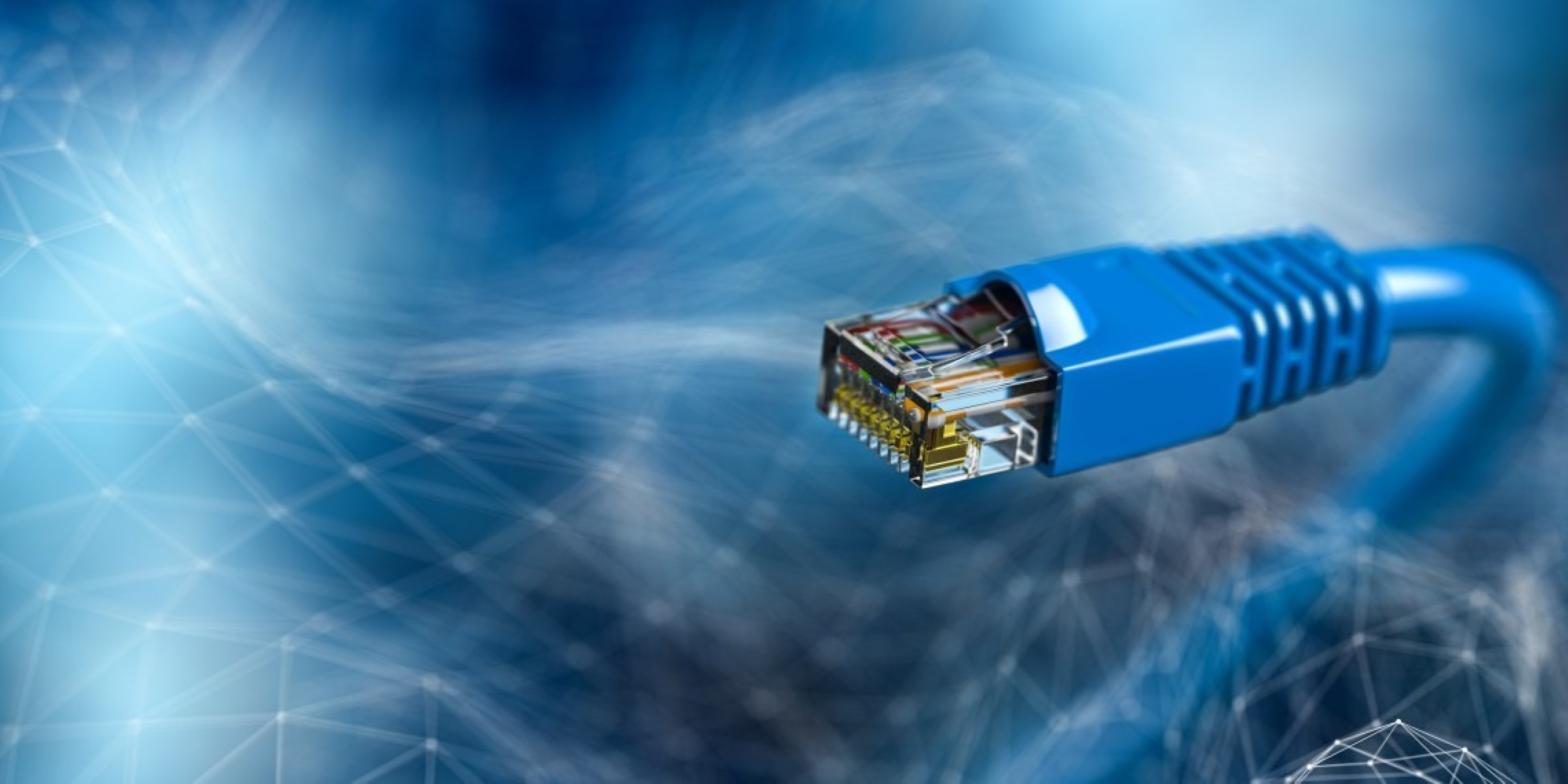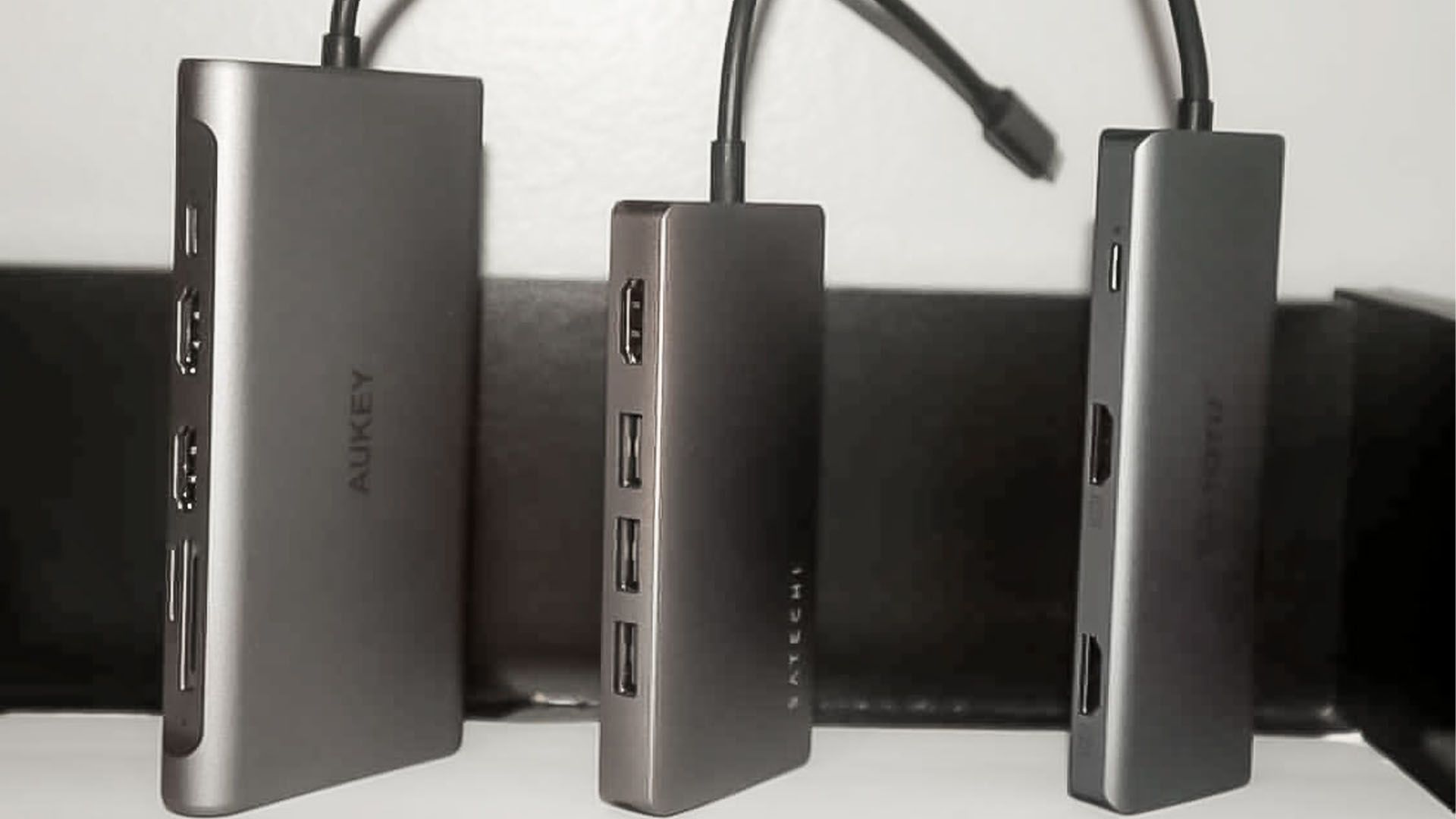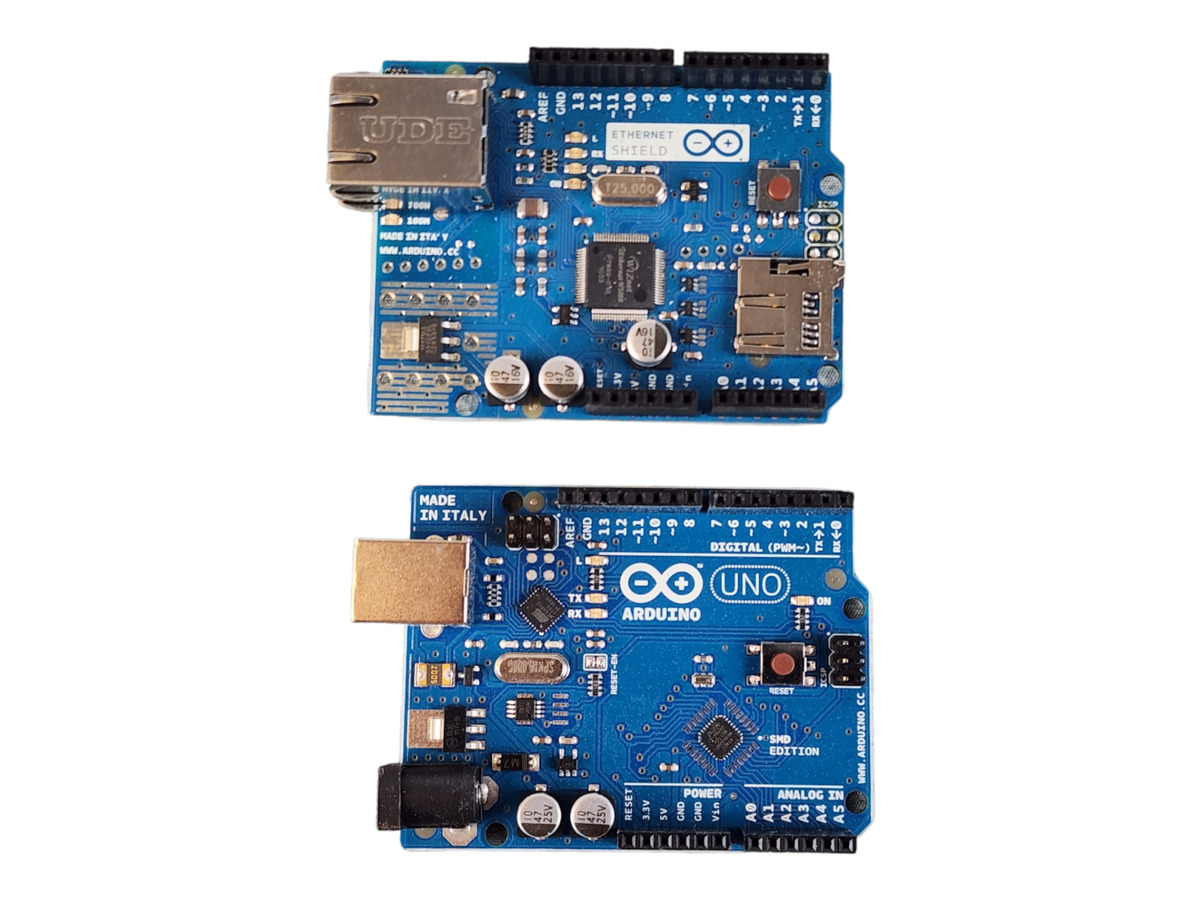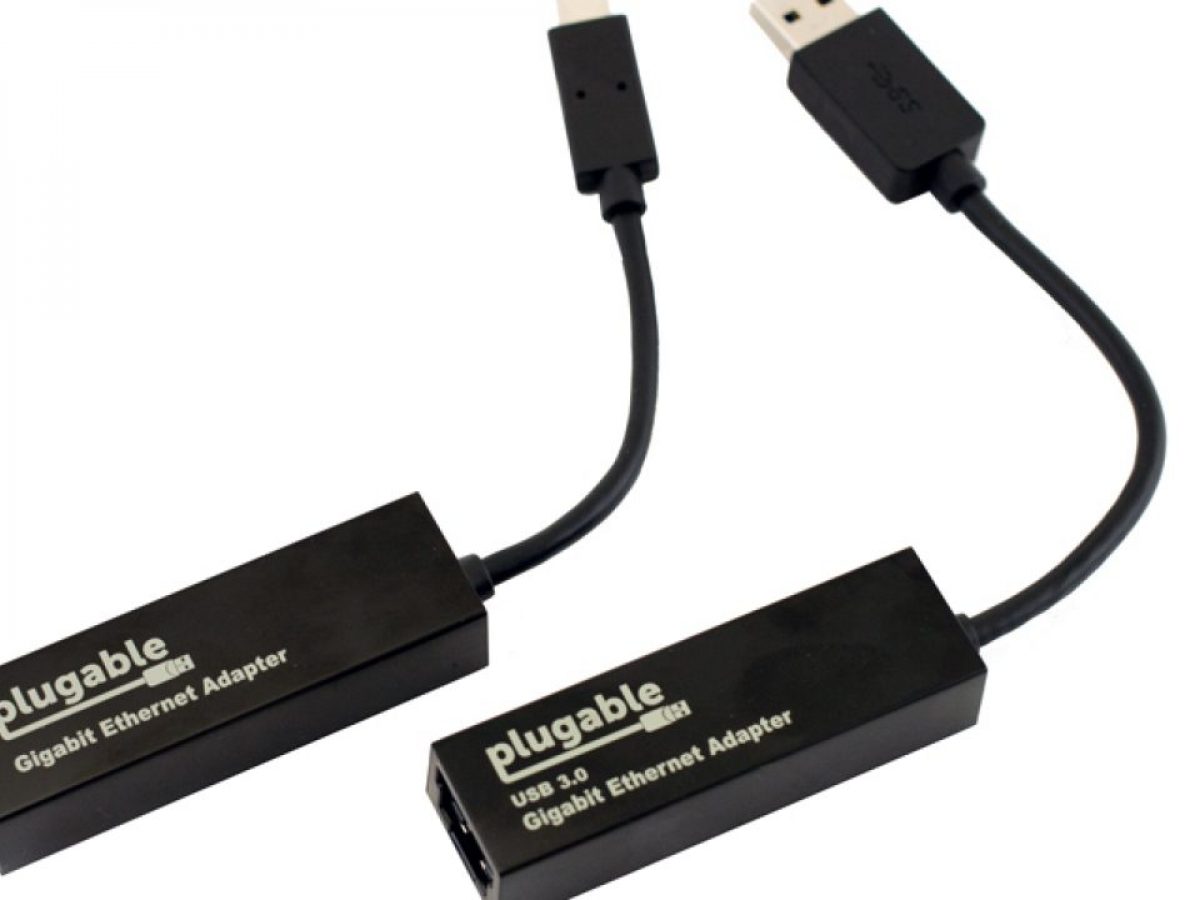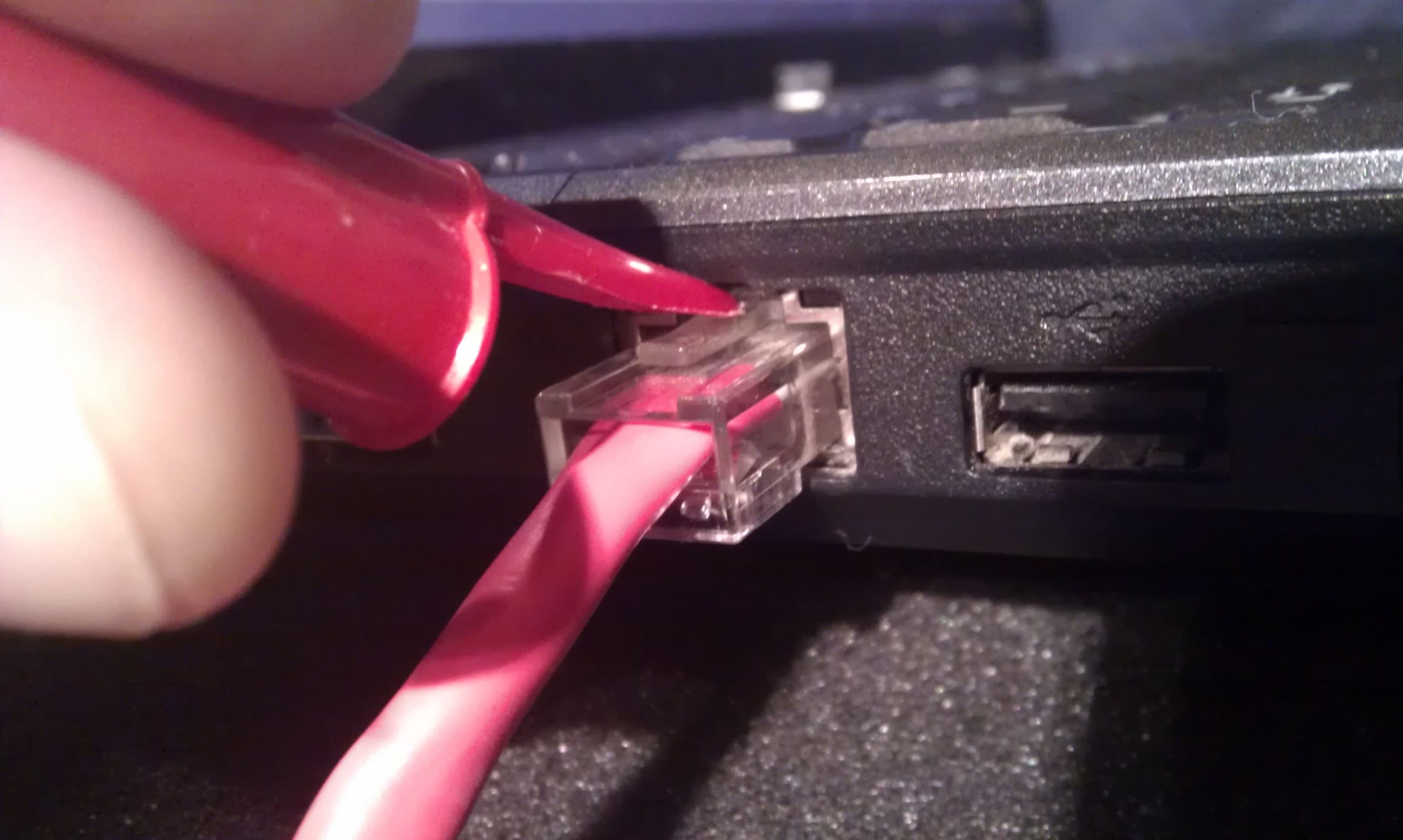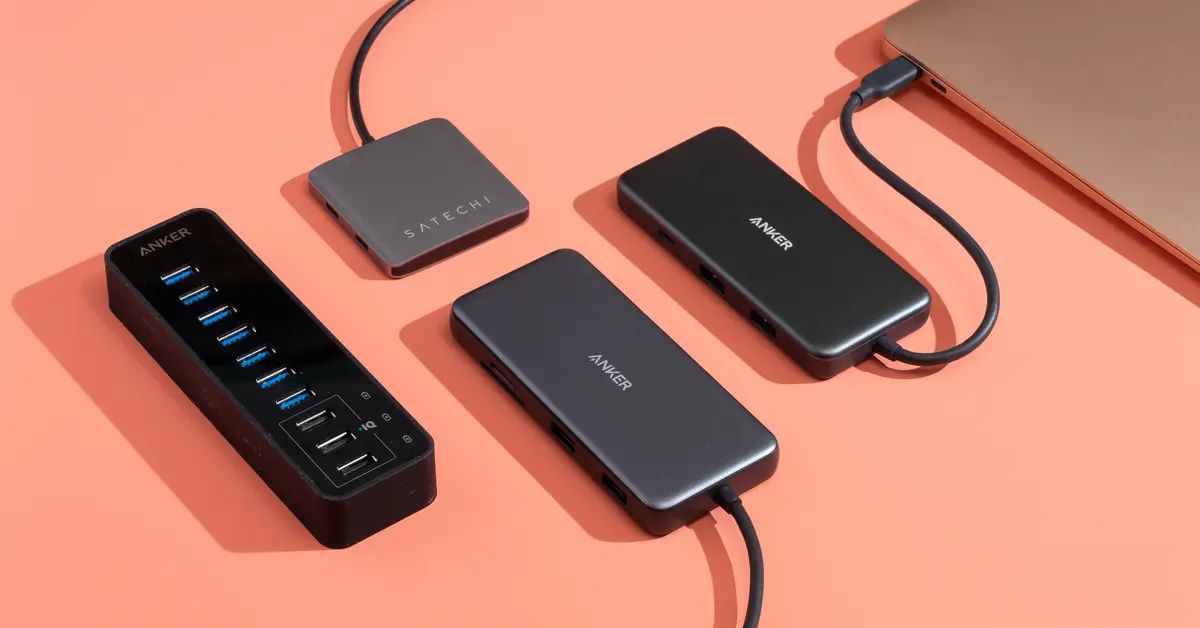What is Power over Ethernet?
Power over Ethernet (PoE) is a technology that enables the transmission of both data and electrical power over a single network cable. It provides a convenient and cost-effective solution for powering devices such as wireless access points, IP cameras, VoIP phones, and other networked devices without the need for additional power sources.
PoE eliminates the need for separate power cables, simplifying and streamlining the installation process. It works by injecting direct current (DC) voltage into the Ethernet cables and delivering power to the connected devices at the receiving end. This is accomplished through the use of Power Sourcing Equipment (PSE), such as PoE injectors or PoE switches, which transmit power over the Ethernet cables.
With PoE, network administrators can deploy devices in locations where power outlets are not easily accessible or may not exist at all. This flexibility allows for greater freedom in device placement, leading to more efficient network design and reduced installation costs. Additionally, PoE devices can be centrally managed and powered down remotely, providing greater control and energy efficiency.
There are two primary standards for PoE: IEEE 802.3af and IEEE 802.3at, commonly referred to as PoE and PoE+, respectively. The original IEEE 802.3af standard supports a maximum power delivery of 15.4 watts per port, while the newer IEEE 802.3at standard supports up to 30 watts per port. This increased power capacity of PoE+ allows for the powering of devices with higher power requirements, such as pan-tilt-zoom (PTZ) cameras and multi-radio wireless access points.
PoE is widely used in various industries, including IT, telecommunications, security, and building automation. It has become an essential technology for enabling the deployment of networked devices in diverse environments, ranging from small offices to large-scale industrial facilities.
Overall, Power over Ethernet provides a practical and efficient solution for powering network devices, offering increased flexibility, reduced installation costs, and centralized management capabilities. Its widespread adoption continues to drive advancements in PoE technology, further expanding its applications and benefits.
Benefits of Power over Ethernet
Power over Ethernet (PoE) offers several advantages that make it a preferred choice for powering networked devices. Whether it’s in an office, a retail store, a campus, or an industrial environment, PoE provides numerous benefits:
1. Simplified Installation:
With PoE, there is no need for separate power outlets near network devices. This eliminates the hassle of running power cables, reducing installation time and costs. It also allows for greater flexibility in device placement, as devices can be deployed in locations where power sources are not easily accessible.
2. Cost-Effective Solution:
By combining power and data transmission over a single Ethernet cable, PoE eliminates the need for additional power infrastructure. This translates into significant cost savings, as there is no need to install additional power outlets or hire electricians for wiring. PoE also saves on energy costs by providing centralized power management and the ability to remotely power down devices when not in use.
3. Easy Scalability:
As network requirements change and new devices are added, PoE facilitates easy scalability. With PoE switches, additional devices can be connected and powered without the need for complex rewiring or adding power sources. This scalability simplifies network expansion and reduces the downtime associated with traditional power methods.
4. Enhanced Flexibility and Mobility:
Network devices powered by PoE can be easily moved or relocated without the constraints of power sockets. This allows for flexible device placement, facilitating changes in office layout or accommodating expanding wireless coverage areas. PoE also enables the deployment of devices in remote or outdoor locations, where access to power outlets may be limited or non-existent.
5. Centralized Management:
PoE enables centralized power management, providing network administrators with greater control over connected devices. Power can be remotely monitored and adjusted, allowing for efficient power allocation and troubleshooting. Devices can be powered down or rebooted remotely, minimizing downtime and maximizing network uptime.
In summary, Power over Ethernet offers simplified installation, cost savings, easy scalability, enhanced flexibility, and centralized management. These benefits make PoE an attractive choice for powering a wide range of networked devices, driving its widespread adoption in various industries.
How does Power over Ethernet Work?
Power over Ethernet (PoE) works by injecting direct current (DC) voltage into the Ethernet cables, enabling the transfer of both data and power to connected devices. This is achieved through the use of Power Sourcing Equipment (PSE), such as PoE injectors or PoE switches, which provide power to the Ethernet cables.
When a PoE-enabled device is connected to a PoE-enabled switch or injector, the negotiation process begins. The PSE detects whether the connected device is PoE-compatible, using a method called power classification. This classification determines the power requirements of the device.
Once the device is classified, the PSE supplies power by adding a low voltage DC signal on the Ethernet cable. This signal is superimposed over the data signal, allowing both power and data to be transmitted simultaneously. The PSE provides power on the same wires used for data transmission, using either two or all four pairs of wires in the Ethernet cable.
On the receiving end, the PoE-enabled device uses a power extraction mechanism to separate the power and data signals. This is achieved through the use of a power extraction circuit that filters out the power signal, allowing it to be used for powering the device. The remaining data signal is processed by the device for communication purposes.
It’s important to note that PoE uses low voltage DC power, typically around 48 volts. The power is delivered to the device according to the power requirements identified during the classification process. The two main standards for PoE are IEEE 802.3af, which supports a maximum power delivery of 15.4 watts per port, and IEEE 802.3at (PoE+), which supports up to 30 watts per port.
PoE technology is designed to be safe, with built-in measures to prevent overloading, short circuits, and power surges. The PSE continuously monitors the power usage and adjusts accordingly, ensuring that the connected devices receive the necessary power without any risks.
In summary, Power over Ethernet works by injecting low voltage DC power into the Ethernet cables, allowing for the simultaneous transmission of both power and data. This technology simplifies the installation process, eliminates the need for separate power sources, and provides a convenient and cost-effective solution for powering networked devices.
Types of Power over Ethernet
There are different types of Power over Ethernet (PoE) standards that dictate the maximum power delivery and capabilities of the technology. These standards ensure compatibility and interoperability between PoE devices. The two main PoE standards are IEEE 802.3af and IEEE 802.3at (also known as PoE+).
1. IEEE 802.3af (PoE):
The IEEE 802.3af standard was the original PoE standard, introduced in 2003. It provides a maximum power delivery of 15.4 watts per port. This is sufficient for powering devices such as IP phones, wireless access points, and IP cameras. IEEE 802.3af operates at a voltage range of 44 to 57 volts DC and uses two pairs of wires (pairs 1-2 and pairs 3-6) in the Ethernet cable for power transmission.
2. IEEE 802.3at (PoE+):
The IEEE 802.3at standard, also known as PoE+, was introduced in 2009 to meet the growing demand for higher power requirements. PoE+ provides a maximum power delivery of up to 30 watts per port. This increased power capacity allows for the powering of devices with higher power demands, such as pan-tilt-zoom (PTZ) cameras, video conferencing systems, and advanced wireless access points. IEEE 802.3at operates at a voltage range of 50 to 57 volts DC and uses all four pairs of wires in the Ethernet cable for power transmission.
3. IEEE 802.3bt (PoE++):
The IEEE 802.3bt standard, also referred to as PoE++, is the latest PoE standard introduced in 2018. This standard significantly increases the power delivery capabilities, offering up to 60 watts or even 100 watts per port. PoE++ is designed to power devices with even higher power demands, such as high-end PTZ cameras, video displays, and industrial equipment. IEEE 802.3bt operates at a voltage range of 50 to 57 volts DC and uses all four pairs of wires in the Ethernet cable for power transmission.
It’s important to note that the power delivery of PoE is dependent on multiple factors, including the quality of the cable, cable length, and power sourcing equipment. It’s recommended to consult the specifications and requirements of each device to determine the appropriate PoE standard to use.
In summary, there are different types of PoE standards, including IEEE 802.3af (PoE), IEEE 802.3at (PoE+), and IEEE 802.3bt (PoE++). These standards define the maximum power delivery and voltage ranges, ensuring compatibility and providing options for powering various types of networked devices.
Requirements for Power over Ethernet
Implementing Power over Ethernet (PoE) requires a combination of compatible devices and proper infrastructure to ensure reliable and efficient power delivery. Here are the main requirements for a successful PoE setup:
1. PoE-Compatible Devices:
First and foremost, the devices being powered must be PoE-compatible. This includes devices such as IP cameras, wireless access points, VoIP phones, and other networked devices. PoE compatibility is typically indicated by the device’s product specifications or a “PoE” label.
2. PoE Power Sourcing Equipment (PSE):
Power Sourcing Equipment (PSE), such as PoE injectors or PoE switches, is required to provide power to the Ethernet cables. The PSE must support the appropriate PoE standard, such as IEEE 802.3af or IEEE 802.3at, based on the power requirements of the connected devices.
3. Ethernet Cables:
The Ethernet cables used for PoE deployment should meet the appropriate standards for compatibility and performance. Category 5e (Cat5e) or higher-grade cables are recommended to ensure proper power delivery and data transmission. It’s important to use cables with sufficient power capacity to support the power requirements of the devices being powered.
4. Power Budget:
Estimating and managing the power budget is crucial for a successful PoE implementation. The power budget refers to the total amount of power available from the PSE to supply to the connected devices. It’s important to consider both the individual power requirements of each device and the total available power from the PSE to avoid overloading the system.
5. Power Overload Protection:
To ensure the safety and reliability of the PoE system, devices such as PoE injectors or PoE switches should have built-in power overload protection mechanisms. These mechanisms prevent excessive power draw, short circuits, and other power-related issues that could damage the equipment.
6. Network Switch Capability:
If using PoE switches to provide power, it’s essential to ensure that the network switch has PoE capability. Not all switches support PoE, so it’s necessary to check the specifications of the switch to verify its PoE compatibility and power output capacity.
By meeting these requirements, it is possible to successfully implement Power over Ethernet and benefit from its convenience, cost-effectiveness, and flexibility in powering networked devices.
Power over Ethernet vs Traditional Power Methods
Power over Ethernet (PoE) provides a modern and efficient alternative to traditional power methods for powering networked devices. Here’s a comparison between PoE and traditional power methods:
1. Installation Complexity:
Power over Ethernet simplifies the installation process by eliminating the need for separate power cables. This reduces the complexity and cost associated with installing power outlets near each device. In contrast, traditional power methods require running dedicated power lines, which can be time-consuming and require the expertise of an electrician.
2. Cost Savings:
PoE offers significant cost savings compared to traditional power methods. With PoE, there is no need for additional power infrastructure, such as power outlets and wiring, resulting in lower installation costs. Additionally, PoE allows for more efficient use of power, enabling centralized power management and the ability to remotely power down devices when not in use, resulting in energy savings.
3. Flexibility and Mobility:
Power over Ethernet enables greater flexibility and mobility in device placement. Devices can be deployed in locations where power outlets are inaccessible or nonexistent, providing more flexibility in office layout or when expanding wireless networks. Traditional power methods, on the other hand, require devices to be located near power sources, limiting flexibility and mobility.
4. Centralized Management:
PoE allows for centralized power management, providing network administrators with greater control over the connected devices. Power allocation can be monitored and adjusted remotely, allowing for efficient energy management. Traditional power methods lack this centralized management capability, requiring manual power management for each device individually.
5. Scalability:
PoE facilitates easy scalability without the need for complex rewiring or additional power sources. PoE switches allow for the seamless addition of devices without disrupting the power infrastructure. In contrast, traditional power methods may require significant infrastructure changes or modifications to accommodate additional devices.
6. Safety and Efficiency:
Power over Ethernet is designed with safety and efficiency in mind. The power is delivered using low voltage DC, reducing the risk of electrical hazards. PoE devices also have built-in protection mechanisms to prevent power overloads and short circuits. Traditional power methods, while generally safe, may have higher risks associated with electrical wiring, power surges, and compatibility issues.
Overall, Power over Ethernet offers numerous advantages over traditional power methods, including simpler installation, cost savings, flexibility, centralized management, scalability, and enhanced safety. These factors contribute to the widespread adoption of PoE in various industries and make it a preferred choice for powering networked devices.
How to Set Up Power over Ethernet
Setting up Power over Ethernet (PoE) requires careful planning and proper configuration to ensure a successful deployment. Here are the steps to follow when setting up PoE:
1. Verify PoE Compatibility:
Ensure that the devices you plan to power are PoE-compatible. Check the product specifications or look for a “PoE” label on the device. PoE compatibility is essential for devices to receive power via the Ethernet cable.
2. Assess Power Requirements:
Determine the power requirements of the PoE devices you intend to power. Each device has specific power needs, and it’s crucial to ensure that the Power Sourcing Equipment (PSE) you use can support the total power consumption of all devices. Consider both the power budget of the PSE and the maximum power capacity of each device.
3. Choose the Right PSE:
Select the appropriate PSE for your PoE setup. This can be a PoE injector, which injects power into the Ethernet cable, or a PoE-enabled switch that supports Power over Ethernet. Consider factors such as power output, port availability, and compatibility with your network infrastructure.
4. Use Quality Ethernet Cables:
Opt for high-quality Ethernet cables that meet the necessary standards for PoE. Category 5e (Cat5e) or higher-grade cables are recommended to ensure proper power delivery and reliable data transmission. Use cables with sufficient capacity to handle the power requirements of your devices.
5. Connect Devices to the PSE:
Connect the PoE devices to the PSE. Use Ethernet cables to establish the connection between the devices and the PSE ports. Ensure that the devices are securely connected and that the cables are properly inserted into the ports.
6. Verify Power Delivery:
Check if the PoE devices are receiving power from the PSE. Look for indicators or lights on the devices that indicate power input or connection status. Use appropriate network management tools or software to monitor and verify the power delivery to each device if necessary.
7. Test and Troubleshoot:
Perform thorough testing to ensure that both power and data are being transmitted successfully to the PoE devices. Check for any connectivity or power issues and troubleshoot accordingly. Validate that the devices are functioning as intended and that the power supply meets their requirements.
Remember to always follow safety precautions while setting up PoE, such as turning off power sources when making connections or handling cables. If in doubt, refer to the manufacturer’s documentation or seek professional assistance for complex PoE deployments.
By following these steps, you can effectively set up Power over Ethernet and enjoy the benefits of simplified installation, cost-effective power delivery, and efficient network operation.
Troubleshooting Power over Ethernet Issues
Troubleshooting Power over Ethernet (PoE) issues requires a systematic approach to identify and resolve potential problems. Here are some common troubleshooting steps to follow when encountering PoE issues:
1. Verify PoE Compatibility:
Ensure that both the Power Sourcing Equipment (PSE) and the PoE devices are compatible with the same PoE standard. Verify that the devices are labeled as PoE-compatible and that they support the appropriate power requirements for each device.
2. Check Power Source:
Ensure that the power source for the PoE devices is operational. Check if the PSE or PoE switch is receiving power and if the power source is active. Look for any indicators or lights on the PSE or switch that indicate power supply status.
3. Inspect Ethernet Connections:
Check the Ethernet connections between the PSE and the PoE devices. Ensure that the cables are securely plugged into the appropriate ports and that there are no loose connections or damaged cables. Replace any faulty or damaged cables if necessary.
4. Monitor Power Budget:
Monitor the power budget of the PSE to ensure that it can sufficiently provide power to all connected PoE devices. Verify that the total power consumption of the connected devices does not exceed the maximum power capacity of the PSE. If needed, redistribute the power allocation or reduce the number of devices connected to the PSE.
5. Check Network Configuration:
Review the network configuration to identify any potential issues. Ensure that the PSE and PoE devices are properly configured in the network. Check if there are any conflicts or misconfigurations that may be affecting power delivery or network connectivity.
6. Update Firmware and Drivers:
Ensure that the PSE and PoE devices have the latest firmware or driver updates. Outdated firmware or drivers can sometimes cause compatibility issues or interfere with the proper functioning of the PoE system. Check the manufacturer’s website for firmware or driver updates and apply them if available.
7. Seek Professional Assistance:
If troubleshooting steps do not resolve the PoE issues, it may be necessary to seek professional assistance. Consult with IT professionals or network technicians who have experience with PoE deployments. They can provide further insights and help diagnose and address any complex or persistent issues.
Remember to exercise caution and follow safety precautions when troubleshooting PoE issues. Power off the devices and disconnect power sources before making any adjustments or handling cables. By following these troubleshooting steps and seeking appropriate assistance if needed, you can effectively resolve PoE issues and restore proper power delivery to your networked devices.
Advancements in Power over Ethernet Technology
Power over Ethernet (PoE) technology continues to evolve, driven by the increasing demand for higher power and more advanced features. Here are some significant advancements that have been made in PoE technology:
1. Higher Power Delivery:
One of the key advancements in PoE technology is the ability to deliver higher amounts of power. The original PoE standard (IEEE 802.3af) provided a maximum power delivery of 15.4 watts per port. However, subsequent standards, such as PoE+ (IEEE 802.3at) and PoE++ (IEEE 802.3bt), have increased the power delivery capacity to 30 watts and even up to 60 or 100 watts per port, respectively. This allows for the powering of more power-hungry devices, enabling the deployment of advanced technologies such as high-resolution IP cameras, video displays, and advanced wireless access points.
2. Improved Efficiency and Energy Management:
Advancements in PoE technology have also focused on improving efficiency and energy management. Energy-efficient features, such as power-saving modes and intelligent power management algorithms, have been implemented to optimize power consumption. These features dynamically adjust power delivery to devices based on their usage, reducing energy waste and promoting sustainable practices.
3. Multi-Gigabit PoE:
Traditional PoE standards, such as PoE+ (IEEE 802.3at), support data transfer rates up to 1 Gbps. However, advancements in PoE technology have led to the development of Multi-Gigabit PoE. This technology supports higher data transfer speeds, such as 2.5 Gbps or even 10 Gbps, while simultaneously delivering power. Multi-Gigabit PoE enables the deployment of high-performance devices and applications, such as 4K video streaming, high-speed wireless APs, and IoT devices, that require faster data rates and increased power delivery.
4. Enhanced Safety Measures:
PoE technology has advanced in terms of safety features and protection mechanisms. The latest PoE standards incorporate measures to prevent power overload, short circuits, and power surges. This ensures the safety of both the connected devices and the network infrastructure. Additionally, safety enhancements, including detection and protection against polarity reversal and incorrect power connections, have been implemented to mitigate any potential risks during installation and operation.
5. PoE Lighting:
Advancements in PoE technology have enabled the integration of lighting systems with PoE. PoE lighting utilizes the Ethernet infrastructure to power and control LED lighting fixtures. This approach offers increased flexibility, energy efficiency, and cost savings in commercial and industrial lighting applications. PoE-powered lighting systems can be easily managed and controlled, allowing for customized lighting configurations, scheduling, and energy monitoring.
These advancements in PoE technology are driving the adoption of PoE in various industries, including IT, telecommunications, security, and smart building automation. As Power over Ethernet continues to evolve, we can expect further innovations to expand its capabilities, enhance efficiency, and meet the power requirements of the ever-evolving networked devices.
Conclusion
Power over Ethernet (PoE) technology has revolutionized the way we power and deploy networked devices. With the ability to transmit both data and electrical power over a single Ethernet cable, PoE offers numerous advantages in terms of convenience, cost-effectiveness, and flexibility.
By eliminating the need for separate power cables, PoE simplifies the installation process and reduces associated costs. It allows for greater flexibility in device placement, as devices can be deployed in locations where power outlets are not easily accessible. PoE’s centralized power management capabilities provide greater control and energy efficiency, allowing for remote powering down of devices and optimized power allocation.
The advancements in PoE technology, such as higher power delivery, improved efficiency, and safety measures, have expanded its applications and capabilities. With higher power standards like PoE+ and PoE++, PoE can now power more power-hungry devices, including PTZ cameras, video displays, and advanced wireless access points. Furthermore, the integration of Multi-Gigabit PoE and PoE lighting has further enhanced the capabilities and potential of PoE in high-speed data transfer and efficient lighting solutions.
It is important to note that successful PoE implementation requires proper assessment of power requirements, selection of compatible devices, and adherence to recommended installation practices. Monitoring power budgets and ensuring the quality of Ethernet cables play vital roles in maintaining a reliable and efficient PoE infrastructure.
As PoE technology continues to evolve, we can expect further advancements and innovations in the field. These advancements will continue to drive the adoption of PoE in various industries, enabling the deployment of advanced networked devices and empowering efficient and interconnected systems.
Power over Ethernet is a versatile and cost-effective solution that has transformed the way we power our networked devices. Its benefits in terms of simplified installation, cost savings, flexibility, and centralized management make it a preferred choice across diverse industries, from small offices to large-scale industrial facilities. As the demand for connected devices and centralized control continues to grow, PoE will play a crucial role in powering the networks of the future.







